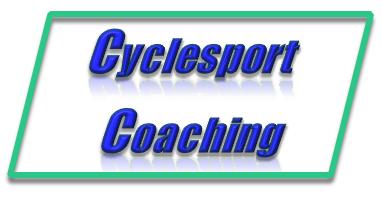Article

Personal Coaching and Training Information
for Cyclists of All Abilities
Training Resources
and Products
It's Hard to Ride Easy
In my last article, “Ride harder on hard days, and easier on easy days”, I reviewed the value of having rest and recovery days. I’d like to delve a little deeper into this subject in this article.
We’ve all heard that we should have easy days following hard rides, to let our muscles recover. Going for an easy spin, called active recovery, is probably better than doing nothing at all. Moving the legs around easily will work the muscles, helping to stretch them out and flush out any waste products. The soreness you feel is likely microscopic tears in the muscle fibers, caused by riding hard the previous day. An easy spin won’t necessarily heal you any faster, but it will prevent you from doing further damage and slowing the recovery.
Now the problem with easy recovery rides is that most people don’t ride easy enough. We like to ride fast and are used to it. Going out for an easy spin shouldn’t mean going 2 mph slower than you are used to going, but that’s typically what happens. When I say go for an easy spin, I mean easy! It should feel as if there is almost no pressure on your feet as you spin the pedals around. You may feel ridiculous out riding and may feel embarrassed to be seen riding that slowly. If that bothers you, hop on your indoor trainer, set it on light resistance and a low gear and spin. It’s okay to spin quickly, 90 rpm or more, as long as you don’t have much resistance. Sometimes it is actually easier to ride easy indoors rather than outside. If you live where there are nothing but hills, it’s difficult to get in an easy ride. Or, if the wind is blowing a gale, it’s hard to ride easy.
When I’m coaching, I use training zones. Zone 1 is recovery pace. This is at or below 70% of your threshold heart rate, or 55% of your threshold power. If you don’t know what your threshold heart rate is, it’s the rate when you are doing a prolonged hard effort on the bike, such as a time trial. If you use heart rate or power to train with, you will realize that these are very low levels of exertion. Hit the slightest hill and you will likely exceed these values. Click here if you’d like to learn how to determine your own training zones.
As I’m coaching riders, typically they don’t have a problem training hard. What’s usually the case is that they don’t spend enough time recovering from their hard training, so they have to learn to slow down and recover. I recently had a cyclist tell me “I’ve never ridden that slowly”. That’s exactly the point. To recover, you need to ride easily, and this is a hard thing for most of us.
While most cyclists don’t yet have power meters, more are getting them all the time. If you happen to have one, here’s a neat way to use it to keep yourself riding slowly enough. If you own a power meter you should already know your functional threshold power level. Multiply this by 0.55 to get the top of your zone 1. When you go out for a recovery ride, set your bike computer to show average wattage for the ride. Try to keep your average watts at or below this zone 1 level. You will probably be surprised how difficult it is to do so. But that’s one of the real values of having a power meter. It not only helps you push hard enough on hard days, but helps you go easy enough on recovery days.
All the best in training, and easy riding!
Coach David Ertl
___________________________________
David Ertl is a USA Cycling Level 1 (Elite) Coach and NSCA Certified Personal Trainer. He coaches individuals interested in improving on their current cycling ability, whatever level that may be. He also provides cycling training plans and ebooks at his website: www.CyclesportCoaching.com
He can be contacted at Coach@CyclesportCoaching.com
Download this article as a .pdf file